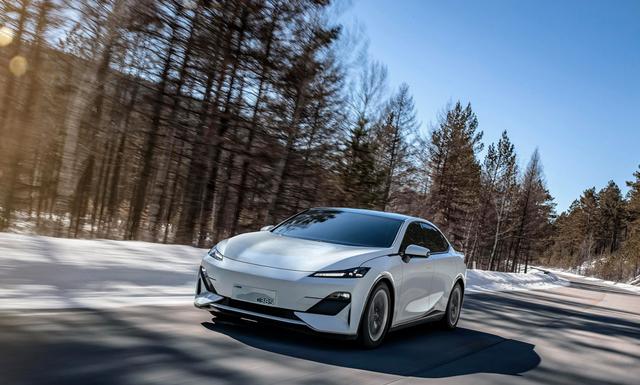From toyota Mirai, which became popular during the Winter Olympics, to Hyundai NEXO, the first hydrogen energy that can be legally put on the road in China not long ago, hydrogen fuel cell vehicles are destined to become the hottest topic in the field of new energy in the next few years. Compared with the distribution of hydrogen refueling stations, in fact, most netizens are still more concerned about when will independent brands launch our first hydrogen energy vehicles?

Not long ago, Changan Automobile released the digital pure electric brand - deep blue, its first model Changan deep blue C385, in addition to the exposure of the exterior interior, the biggest highlight of Changan deep blue C385 is that it has a pure electric version, a range extended version, a hydrogen energy version, three powertrain options, is expected to open pre-sale in mid-May!
Starting from the deep blue C385, Changan began to become a real pioneer of its own brand new energy. Therefore, the Tea South Navy C385 as the first domestic hydrogen energy model is still very worth a look!
For the market of 150,000-300,000 yuan
The exterior design of the Navy C385 seems to inherit many UNI-V design elements, although the LOGO of the Navy brand has not been announced, but the sharp edges and angles and sporty shape are still very impactful, in line with the sporty attributes of the whole vehicle.
In terms of body size, Changan Navy C385 positions medium-sized sedans, its length, width and height are 4820/1890/1480mm, wheelbase is 2900mm, the vehicle wind resistance coefficient is only 0.23Cd, and the taillight design is more exquisite than the current UNI-V model.
According to Changan's planning, the Deep Blue brand currently plans a total of 5 products, and sales are expected to reach 600,000 vehicles by 2025. In addition to the C385 this year, an SUV model will also be unveiled. Happily, the ultimate goal of the C385 is to create a new blue ocean market for electric vehicles in the 150,000-300,000 yuan class.
Hydrogenation for 3 minutes, endurance 700km
Changan Navy C385 in addition to providing pure electric version and extended range version, but also provides hydrogen fuel cell version, pure electric version and the strength of the extended range version is also not to be taken lightly, pure electric version of the model, the maximum power of 190kW, CLTC comprehensive mileage will exceed 700km; the extended version of the comprehensive mileage will reach 1200km, feed energy consumption of 4.5L/100km.
Energy consumption level is still the most intuitive hard power of a new energy brand, according to the data, the hydrogen and electricity version of the model under the comprehensive CLTC standard under the working mileage of up to 700 km, feed hydrogen consumption as low as 0.65 kg / 100 km or less, can achieve 3 minutes of ultra-fast energy replenishment.
What are the development prospects of hydrogen energy?
Hydrogen can be obtained through electrolyzed water, and the discharge of hydrogen after combustion is only water, which can be said to be inexhaustible and harmless to the environment. Therefore, the development of hydrogen energy is the most ideal energy model, and the future energy structure will gradually diversify.
In March this year, the National Development and Reform Commission has officially announced the "Medium and Long-term Plan for the Development of hydrogen energy industry (2021-2035)", which for the first time clarified that hydrogen energy will become an important part of China's future energy system, and determined that renewable energy hydrogen production is the main development direction.
Although the current number of domestic hydrogen refueling stations is far less than that of charging piles and substations, in the long run, the convenience of hydrogen energy vehicles has been very close to that of fuel vehicles, especially in those alpine areas where the environment is not suitable for the use of traditional electric vehicles, hydrogen energy vehicles are more likely to meet the use scenarios.
At present, in terms of hydrogen energy supporting facilities, photovoltaic hydrogen production has been confirmed to be feasible. Sinopec plans to establish 7,000 distributed photovoltaic power generation stations across the country and add 1,000 hydrogen refueling stations during the "14th Five-Year Plan" period. At that time, the cost of hydrogen energy use will be further reduced, and after the Winter Olympics, Beijing's hydrogen energy industry will usher in rapid development and play a demonstration role in national promotion.
As China's first mass-produced hydrogen fuel cell car, the debut of Changan Deep Blue C385 is destined to be "a stone to stir up a thousand waves", in addition to Toyota, Hyundai, BMW and other foreign brands, domestic car companies such as FAW, Dongfeng, GAC, BAIC, Great Wall, etc. have also put hydrogen energy vehicles on the agenda, and it will not be long before more domestic hydrogen energy vehicles meet with us.
For this Changan Navy C385, would you choose its hydrogen energy version? Why?